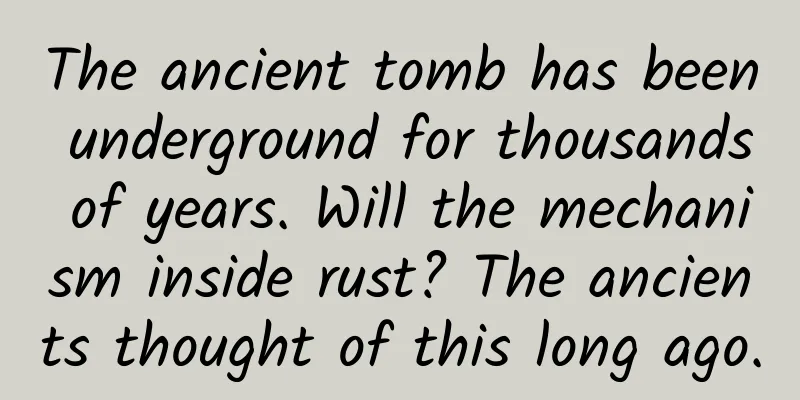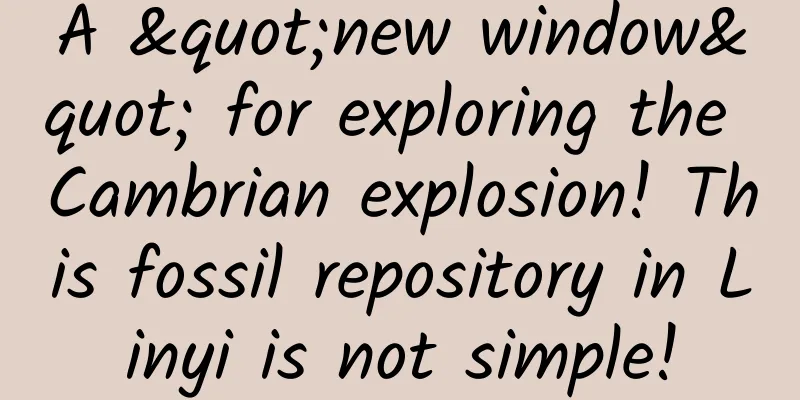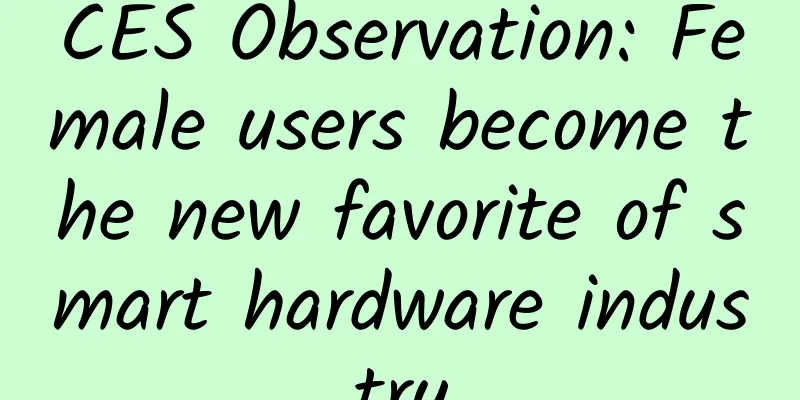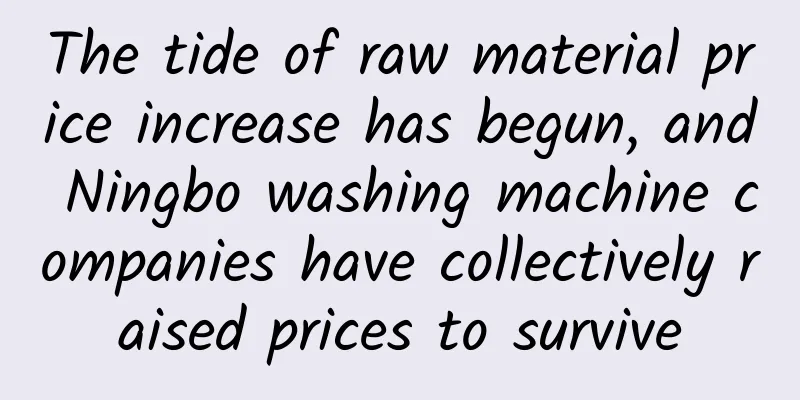The ancient tomb has been underground for thousands of years. Will the mechanism inside rust? The ancients thought of this long ago.

|
Previously, film, television and novel works about tomb archaeology were once popular, and the ancient mechanisms in them dazzled the audience. What makes people wonder is that after being underground for thousands of years, wouldn’t these mechanisms rust? In fact, the ancients had already thought of this and solved this problem. Will it rust? Rust is inevitable. No matter what material is used to build the mechanism, it will age over time. Among the laws of physics, there is a law of increasing entropy. Simply put, in a closed space, heat will flow from high-temperature objects to low-temperature objects, and this process is irreversible. When entropy increase reaches its maximum value, all objects will be in a state of chaos. For example, when people build a house, the entropy value inside it will gradually increase over time. The house is also aging, and the house collapses after about 60 years, and the entropy increase inside it reaches its highest point. The chaotic state can also extend to the destruction of things, and entropy increase is the process of things moving towards destruction. Based on the law of entropy increase, scientists have concluded that the end of the universe is likely to be "heat death." Therefore, the mechanisms of those ancient tombs were destined to destruction from the moment they were built. If the mechanism is made of metal, it can only last for a hundred years. If the drainage system in the tomb is not well designed and rainwater seeps in, the mechanism of the entire tomb will be corroded and fail in a short period of time. Therefore, the mechanisms in the thousand-year-old tombs in novels and movies are still flexible, they are just "show effects". The clever ancients also knew that this mechanism would not last long, so they built "semi-permanent" defense projects inside it. This type of project can be preserved for a very long time, some can exist for hundreds of thousands or millions of years. For humans, whose average life expectancy is only over 70 years old, such a time span can be described as eternity. Moreover, this kind of project can also be regarded as a mechanism in a sense. So, what "permanent" mechanisms did the ancients use when building ancient tombs? Mercury Poison Tomb When talking about defensive projects made of mercury, we have to mention the ancestor of emperors - Qin Shi Huang. According to Sima Qian's records, Qin Shihuang's underground palace was filled with mercury. On the one hand, this mercury could prevent tomb robbers, and on the other hand, mercury could better preserve the corpses in the underground palace. Unfortunately, Qin Shihuang’s underground palace has never been fully excavated, and it is difficult to judge the authenticity of the claim that there is a large amount of mercury in the underground palace. But we can find clues from the Mausoleum of Qin Shihuang. Archaeologists have previously discovered a lot of mercury in the Mausoleum of Qin Shihuang. Does this mean that mercury does exist in the underground palace? Of course not, more evidence is needed for specific matters. However, records from previous generations all pointed to the presence of a large amount of mercury in the underground palace. The Book of Han points out that Qin Shihuang used mercury to represent the large rivers in the underground palace, forming the eight wildernesses of his tomb. At the same time, there are similar records in "Records of the Grand Historian". If these records are true, then there may be a mercury river in Qin Shihuang's underground palace. Therefore, the country was also very cautious when developing the Mausoleum of Qin Shihuang, and tried its best to control robots to explore the tomb. This also slowed down the exploration of Qin Shihuang's Mausoleum by Chinese archaeologists. Therefore, related excavation work is still being carried out. However, there is still a question that bothers archaeologists. If there is a mercury network in the underground palace, where does the mercury come from? The only possibility is that Qin Shihuang had already planned the construction of his own tomb very early on, and summoned groups of people to work on it day and night. In addition, there is a strange tomb. Although there is no poisonous gas, the inside is indestructible, which makes tomb robbers stay away. It is the tomb of Emperor Liu of the Southern Han Dynasty. It is recorded that Liu loved money during his lifetime and hoped to be buried with many gold, silver and jewelry after his death, but he was afraid of being coveted by tomb robbers, so he ordered that after he was buried in the tomb, the craftsmen should use molten iron to seal the tomb. Such a tomb is extremely solid. Even with the development of science today, it is not easy to dig out Liu's treasure. Perhaps his treasure can only reappear in the world after the iron is corroded completely by nature. Quicksand Tomb In tomb-raiding movies, the protagonist often encounters a situation where he is trapped in a closed space because of touching a mechanism, with a constant flow of quicksand. If there is no help, the end result is that he will be buried alive. The operating principle of the quicksand tomb is similar to this, except that the purpose of building this kind of tomb is not to bury tomb robbers alive, but to use the fluidity of quicksand to make it difficult for tomb robbers to find the treasure in the tomb when digging the tomb. Some owners of quicksand tombs even put stones on the quicksand. If the quicksand flows too fast, the stones on top will fall down and crush the tomb robbers to death. In order to increase the fluidity of the sand, the ancients would stir-fry it before placing it into the tomb, remove the moisture in it under the action of high temperature, and then cover it with thick rammed earth so that it would not be affected by rain. In 2004, an archaeological team in Shaanxi discovered a quicksand tomb in the area. The sand layer in the cemetery is two meters thick, and there is a 7-meter thick layer of soil on it. Unfortunately, no matter how heavy the defense system is, it still cannot escape the clutches of tomb robbers. Death Gate Crypt If the first two types of cemeteries make people marvel at the wisdom of their ancestors, then the last type of cemetery will make people shudder, as it is a tomb sealed with a death door! The door of the tomb is sealed from the inside out, and there is no way to open it except by violent destruction. What method was used to seal it from the inside? In fact, it is very simple. Just put the buried person into the tomb, let a few craftsmen follow, and close the tomb door from the outside to the inside. These craftsmen were buried alive in the tomb. After they sealed the last door of death, they would starve to death in the tomb. The construction of such tombs is simply inhumane, and only the royal aristocracy has the financial resources to recruit these dedicated craftsmen. It is said that there are two dead doors in Qin Shihuang's underground palace. They were sealed by three craftsmen at the beginning. The structure is very solid. If it is destroyed violently, the treasures in the underground palace may be damaged as well. The existence of these three types of tombs have been verified and are clearly recorded in historical books. At this time, friends may be wondering, do those strange mechanisms in movies and TV dramas really exist? Weird door trap For example, some tomb robbers triggered the mechanism, and millions of poisonous arrows were shot out, while others missed the opportunity and were stabbed to death by swords and knives in the pits. In some tomb-raiding movies, even the terracotta warriors guarding the gate will be resurrected. In fact, there is not much research on these mechanisms. Even if they can really move, they have become old after hundreds or thousands of years and are not as flexible as in the movies. From a technical perspective, the level of technology in ancient my country was not enough to create such sophisticated fortifications. However, in the tombs of some nobles, there may be pits full of sharp knives. Today, our country has clear legal provisions to protect any cemetery within the country. Once tomb robbers are caught, they will face life imprisonment. What do you think about this? Welcome to leave a message in the comment area. Follow CHN Jiuxiang Technology, and through popular science, you will find that there are too many wonderful things in this world. |
<<: You really need to know how often you should change your towels!
>>: How much suffering have those whose last digit on their ID card is X endured?
Recommend
The latest strategy for reviewing Douyin live broadcast in 2021
Why is your Douyin live streaming sales not effec...
Tutorial for novices on how to create a WeChat mini program in 10 minutes!
1. First, open the free mini-program creation web...
After being infected with the new coronavirus, in what situations do you need to go to the hospital?
In the face of the COVID-19 pandemic, many people...
Where is the source of the 2022 epidemic? In which town is it located? Attached is the latest news on the epidemic
Recently, according to the new local confirmed ca...
DeepMind AI makes another breakthrough, tracing the traces of ancient human writing
Written by: Yang Xiao It is undeniable that artif...
Do animals have love? DeepSeek answers
Humans have love, but is there love between anima...
New advertising methods, Q-series homepage information flow advertising product capabilities and cases
1. Catering to user experience , information flow...
Congratulations! Zhai Zhigang, Wang Yaping, and Ye Guangfu were awarded the Space Merit Medal
CPC Central Committee State Council Central Milit...
Case analysis of search promotion in local life service industry!
This article shares with you a search promotion c...
Online event promotion, increased 100,000 users in seven days!
What kind of event can enable a beauty store to g...
Can't eat sow meat? Will eating sow meat make you "sow crazy"? You are not the last person to know
Popularize science and spread science to the publ...
Why are succulents drought-tolerant?
Produced by: Science Popularization China Author:...
How to attract traffic and monetize through WeChat red envelope covers?
Today I want to ask you a few questions, and you ...
Nintendo may have a tough winter this year
On October 29, Nintendo's new president, Tats...
The top ten figures of Nature in 2023 are released: ten news figures of the year and one AI
Nature Cover The pictures and characters in this ...









